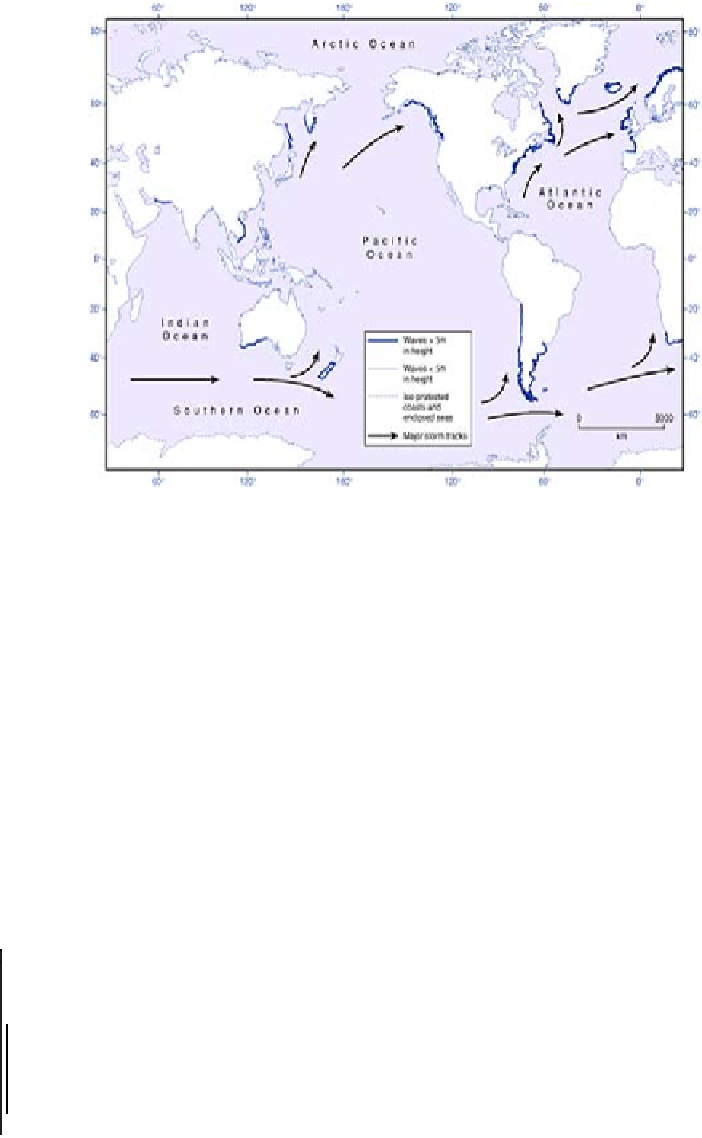Environmental Engineering Reference
In-Depth Information
Figure 17.15
Global wave environments.
Source: Partly after Davies (1980).
CONCLUSION
Of all dynamic geomorphic landsystems, those subject to the work of the sea are among
the most frail. Coastal materials may cross the threshold between terrestrial and marine
environments at time scales as short as a breaking wave, tidal flow or storm surge.
Coastlines, like flood plains, offer a diverse range of economic opportunities and
aesthetic attractions for human occupation but at a price. Low-lying barrier coasts and
estuaries are particularly unstable and prone to storm surges. Rocky coasts are more
enduring but failure is often dramatic when it occurs. Evidence of the geomorphic and
human consequences of historic sea-level change demonstrates the changeable character
of the coastline and the problems posed by impending sea-level rise. Increasing
appreciation of coastline complexity and sensitivity is leading to more varied, holistic and
pragmatic strategies in its management. Cnut's message is being heard!
KEY POINTS
1
Moving water and air shape the coastline and modify the effects of other sub-aerial
processes of weathering and erosion. Water energy is derived from wind-driven
breaking waves and, to a lesser extent, tidal waves and currents. It is applied through
hydraulic pressure water jets and sheets Windenergydeflatessandfromthe





